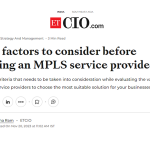Table of contents
Credits: Published by our strategic partner Tenovos.
Let’s face it—traditional digital asset management (or DAM) software isn’t built with the needs of today’s modern marketing teams in mind. Most DAMs function primarily as an archive, providing a central place for you to store and share content. But once that content makes its way out into the world? Poof! It disappears off your DAM’s radar. There’s no easy way for you to see what’s been published, what channels your assets are on, or where there are content gaps. Like peering past the event horizon of a black hole, it’s just… gone.
This is all bad news for your creative team—and especially your designers—who are left scratching their heads over which assets are getting used most frequently and which have hardly been touched. Because you don’t know what’s working well, you can’t optimize to produce more of what’s resonating with your audience. All that unused and unsuccessful content is money down the drain. Research shows that marketers waste about a quarter of their budgets on ineffective channels and strategies.
There’s a better way. That’s why we created a modern DAM platform with the ability to not only manage your content, but also act as your publishing hub.
Intrigued? Let’s explore what the modern DAM looks like and why it’s so revolutionary.
Traditional vs. Modern DAMs
Traditional DAMs
|
Modern DAMs
|
A traditional DAM acts as a storage facility. It’s one easy-to-access location for all your team’s content, like licensed images, logos, and infographics. Compared to a shared folder or drive, it’s a big upgrade. It makes content accessible to everyone on your team, empowers the design team to maintain control over your creative, and ensures that folks aren’t going rogue with your branding.
But there are issues with traditional DAMs too. It’s almost impossible to publish directly to your social, ecommerce, or web channels. You have to download assets from the DAM to pull into channels and campaigns, meaning that the design team is often left in the dark over how assets are actually being used. Unless you manually search for your content on each channel, your designers won’t know what pieces were published and where there are opportunities for content reuse. This means design feedback is slow and it’s challenging to optimize your assets for next time.
The modern DAM completely upends this paradigm by becoming a publishing tool. Instead of simply storing your assets, the DAM becomes a one-stop shop for curating, publishing, measuring, and optimizing your creative.
Rather than downloading your content to use in campaigns, the modern DAM integrates with your marketing suite so you can publish it directly to all your channels (social, ecommerce, etc.), easily analyze content gaps, and recall any outdated assets from publication so you can maintain a consistent brand.
This means when you pull an image from the DAM into a campaign, the DAM is quietly building a “context path” in the background so you can trace it and understand its full usage lifecycle. A modern DAM shows you an exact picture of what content is getting used, who’s using it, and what content is ripe for reuse.
Sify DAM Platform: The Next Phase of DAM Evolution
You’ve invested so many hours, resources, and effort into your content—we think it’s about time you were able to truly understand its impact on your business growth. With its open, cloud-based platform, and holistic view of content, we built Sify DAM platform to be the modern DAM that marketing teams need.
Sify DAM platform Story Activation feature lets you quickly publish content and track it across digital channels, allowing you to obtain real-time insights into your content investment. No need to toggle between all your different marketing tools. It’s time to stop publishing into the void, and start producing more of what your audience wants.
Written by Michael Waldron, CMO, Tenovos






























































